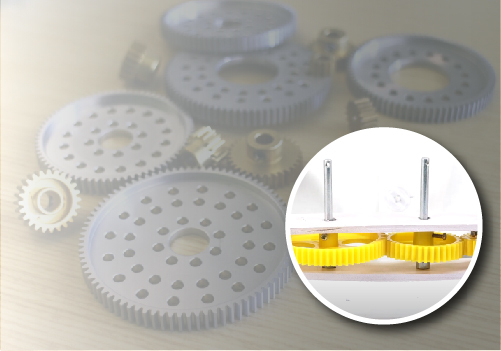Combination of Gear
School Level
Packages comprises of
- Recorded Lectures
- Study Material - Pdf
- Edp
- Assessment followed by certificate after completion of 50 %
- Prototype Project view of minimum duration
- Mentorship
- Submission of Project
- Certificate after successful completion of project work
Overview
The combination of gears refers to the arrangement of multiple gears in a mechanical system to transmit motion and power between rotating shafts. Gears are toothed wheels that mesh together, and they play a crucial role in transforming rotational speeds and torque in various machines and mechanisms.
When gears are combined, they create gear trains or gear systems, allowing for the transfer of rotational motion and energy. These gear systems come in different configurations, such as spur gears, helical gears, bevel gears, worm gears, and more. Each gear type has unique properties that make it suitable for specific applications.
The combination of gears can result in different outcomes, depending on the gear ratio, which is determined by the number of teeth on each gear. A gear with more teeth than the one it meshes with will increase rotational speed but decrease torque, while a gear with fewer teeth will do the opposite – decrease speed but increase torque.
Gears find application in various industries, including automotive (transmissions), manufacturing (machinery), robotics, clocks, and many other mechanical devices. Their precise meshing and arrangement ensure efficient power transmission and motion control, making them an essential element in modern engineering and technology.
The combination of gears refers to the arrangement of multiple gears in a mechanical system to transmit motion and power between rotating shafts. Gears are toothed wheels that mesh together, and they play a crucial role in transforming rotational speeds and torque in various machines and mechanisms.
When gears are combined, they create gear trains or gear systems, allowing for the transfer of rotational motion and energy. These gear systems come in different configurations, such as spur gears, helical gears, bevel gears, worm gears, and more. Each gear type has unique properties that make it suitable for specific applications.
The combination of gears can result in different outcomes, depending on the gear ratio, which is determined by the number of teeth on each gear. A gear with more teeth than the one it meshes with will increase rotational speed but decrease torque, while a gear with fewer teeth will do the opposite – decrease speed but increase torque.
Gears find application in various industries, including automotive (transmissions), manufacturing (machinery), robotics, clocks, and many other mechanical devices. Their precise meshing and arrangement ensure efficient power transmission and motion control, making them an essential element in modern engineering and technology.

Let's Connect...
Are you interested in Combination of Gear | PBL ?
or Looking for Something else post your enquiry below.
Please rotate your device
We don't support landscape mode yet. Please go back to Portrait mode for the best experience.

Hunar India
Typically replies within a day
Hunar India
Hi there
How can I help you?
12:06




